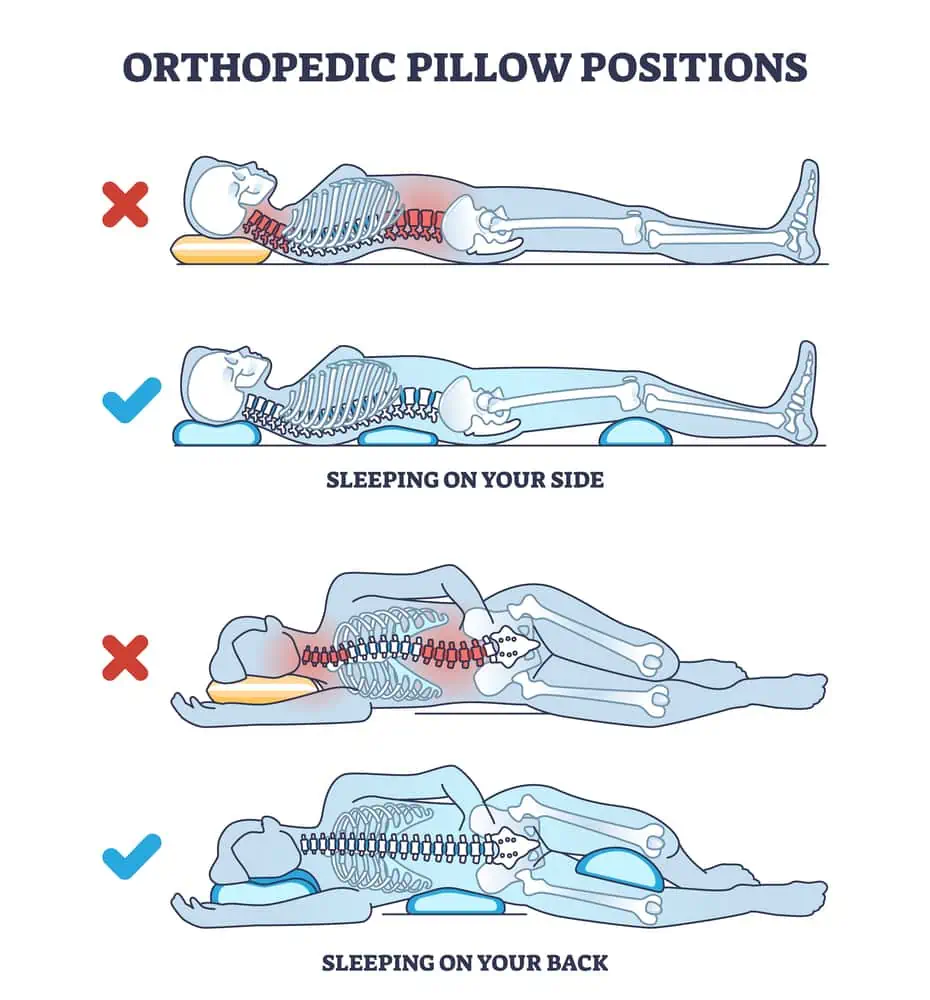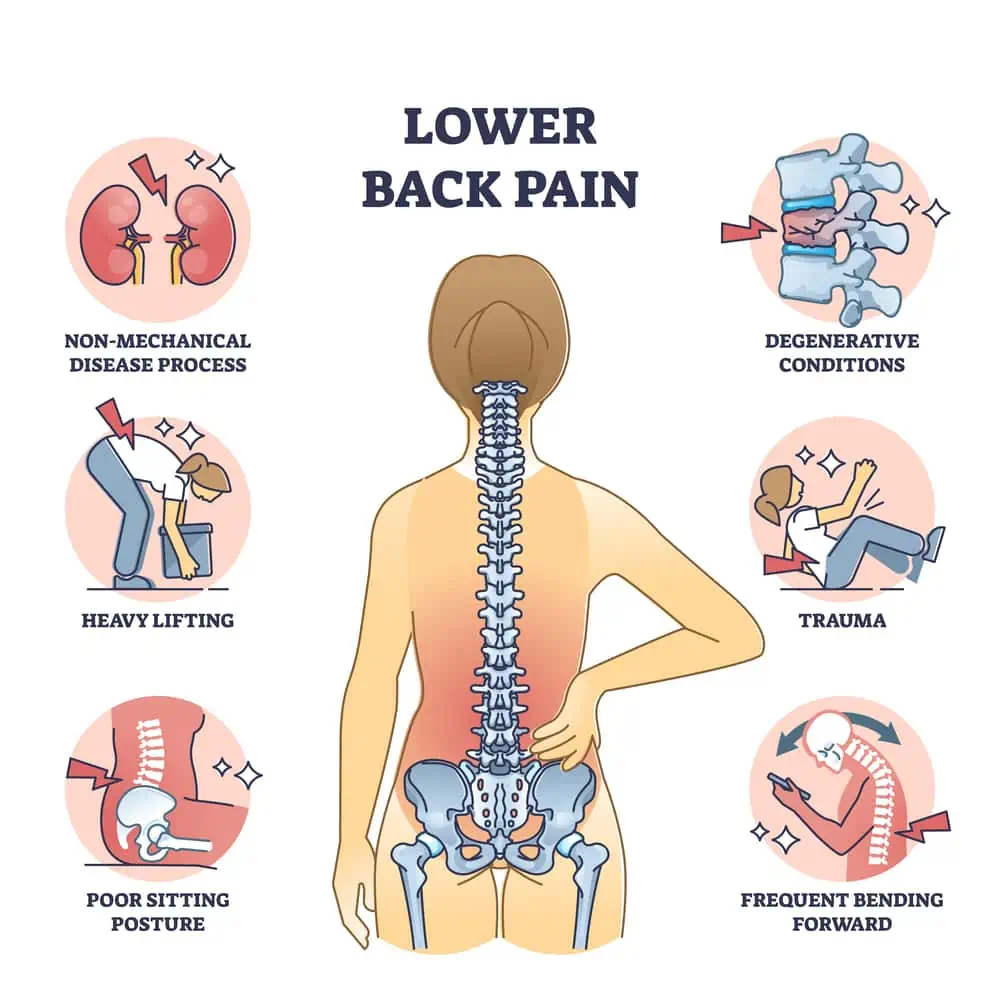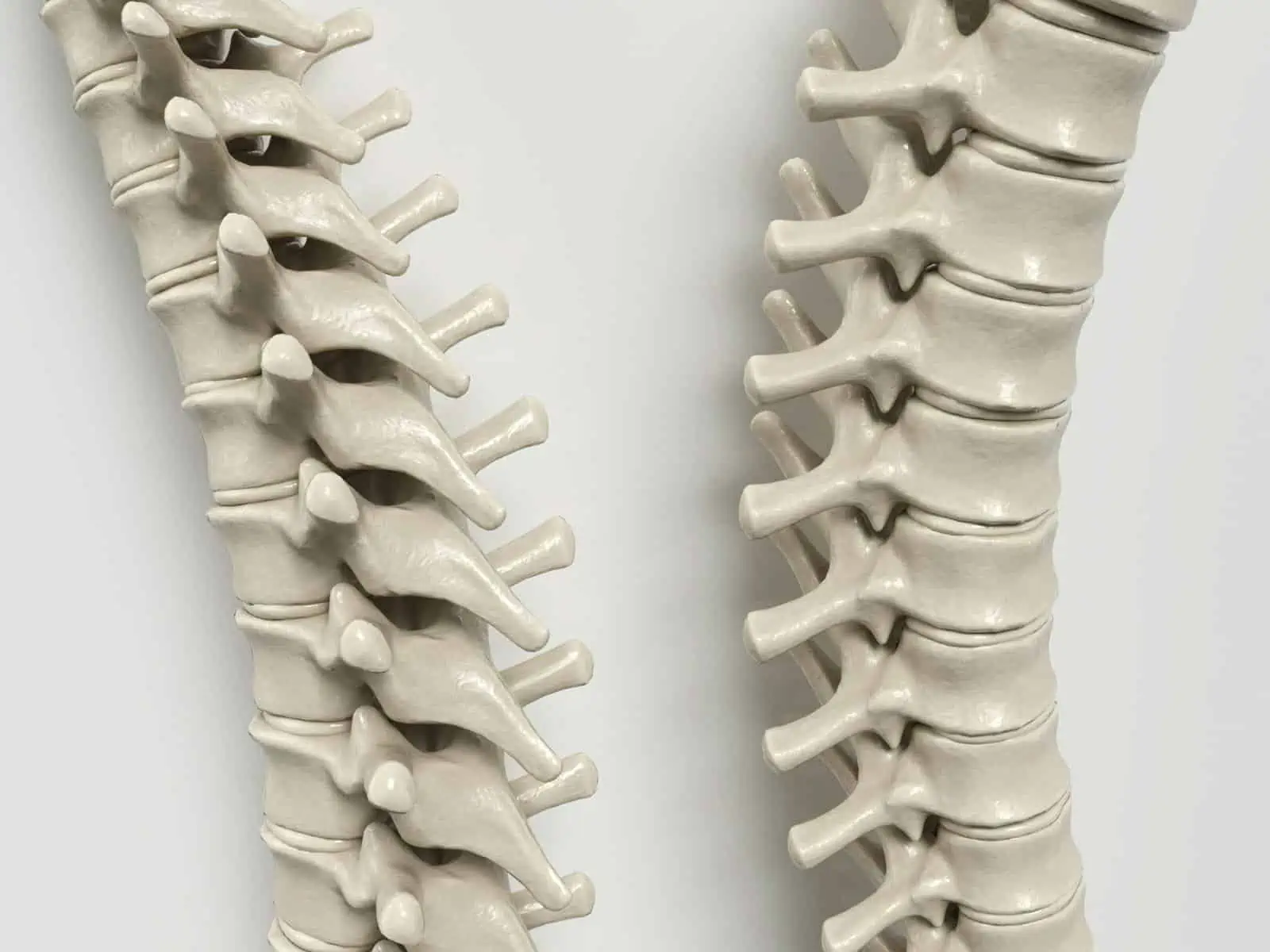Living with sacroiliac joint pain (SI) can be a challenging experience, especially when it comes to finding restful sleep. The discomfort and sharp pain associated with this condition often intensify during the night when your body is in a static position for extended periods. Discovering comfortable sleeping positions and using supportive measures are critical for minimizing pain and ensuring that the body gets proper rest. Below we will guide you through managing SI pain at night and how to sleep with sacroiliac joint pain.

To achieve a better night’s sleep, we must pay close attention to our bedtime routine and sleeping environment. Supportive bedding, optimal room temperature, and the avoidance of certain sleep positions that exacerbate SI joint pain can create a more conducive setting for sleep. Incorporating relaxation techniques and gentle stretches before bedtime can also help ease the discomfort and promote a more peaceful sleep experience.
Key Takeaways
- Minimizing SI joint pain at night requires supportive sleep positions and environments.
- A proper bedtime routine and relaxation techniques can aid in alleviating pain.
- Seeking professional advice is recommended if pain persists despite self-management.
Understanding Sacroiliac Joint Pain
In addressing sacroiliac joint pain, we must first explore its anatomy, the common causes, and how it’s typically diagnosed. Our aim is to provide a comprehensive understanding to better manage the discomfort associated with this condition.
Anatomy of the Sacroiliac Joints
The sacroiliac joints reside at the junction of the pelvis and the lower spine, linking the sacrum bone to the hips on either side. These joints provide stability and facilitate the transfer of weight between the upper body and the legs. The primary role of the sacroiliac joints is to bear the load and absorb shock, making them crucial for effective movement.
Common Causes of SI Joint Pain
SI joint pain often stems from various conditions which may include:
- Arthritis: Degenerative arthritis or osteoarthritis can lead to joint wear and inflammation, as can psoriatic arthritis, and ankylosing spondylitis.
- Pregnancy: The pelvis expands during pregnancy, potentially straining the sacroiliac joints.
- Infection: Rare instances of joint infection can also be a root cause of pain.
- Risk factors such as prior lower back surgery, trauma, or even long periods of standing or walking can induce or exacerbate pain in the sacroiliac joints.
Symptoms and Diagnosis
Symptoms of SI joint pain can manifest as discomfort in the lower back, butt, hips, or pelvis. The pain often radiates down the legs and can worsen with standing or walking. A clinical diagnosis usually involves a physical examination and may be confirmed with imaging tests or diagnostic injections. Common interventions for relief include ibuprofen or other nonsteroidal anti-inflammatory medications to reduce pain and inflammation.
When pursuing an understand of sacroiliac joint pain, these details contribute to our foundation of knowledge, guiding us towards effective management and relief strategies.
how to sleep with Sacroiliac Joint Pain
When dealing with sacroiliac joint pain, our sleep quality can be severely impacted. By selecting the right sleeping position, optimizing our mattress and pillows, and maintaining good sleep hygiene, we can enhance our comfort and minimize the pain.

Best Sleeping Positions
- On Your Side: Lie on the side that feels more comfortable, placing a pillow between your knees to keep your hips aligned. This position can help reduce stress on the sacroiliac joint.
- On Your Back: Keep your spine neutral by placing a pillow under your knees. A small, rolled towel under your lower back may provide additional support.
Mattress and Pillow Considerations
- Mattress: A medium-firm mattress can provide the balance between support and comfort to alleviate the pressure on the sacroiliac joint.
- Pillow: Use a supportive pillow to maintain neck alignment. Consider a contoured pillow if you sleep on your back or a thicker one if you’re a side sleeper.
Creating an Optimal Sleep Environment
- Room Temperature: Maintain a cool, comfortable temperature in your bedroom.
- Noise & Light: Reduce noise and light with blackout curtains and white noise machines to promote uninterrupted sleep.
- Routine: Establish a sleep routine with consistent wake-up and bedtime hours to encourage good sleep hygiene.

Non-Surgical Treatment Options
When dealing with sacroiliac joint pain, a combination of non-surgical treatments can offer significant relief. We focus on methods that can be applied at home or with professional guidance to reduce pain and inflammation.
Home Remedies and Lifestyle Changes
At home, we can apply heat and ice therapy to manage pain and reduce inflammation. Alternating between a low-heat heating pad and ice packs on affected areas several times a day for around 20 minutes can help. Additionally, we consider the importance of maintaining an optimum sleeping position. Placing a pillow between the knees while sleeping on the side, or under the knees while on the back, can provide the necessary support and alleviate pressure on the SI joint.
Physical Therapy and Exercises
Physical therapy plays a crucial role in our recovery process, with exercises aimed at strengthening the muscles around the sacroiliac joint to provide better stability. We include a range of exercises, from pelvic tilts to lower back stretches, that can relieve tension in the sacroiliac area. A certified physical therapist can guide us through these exercises to ensure they are done correctly and safely.
Medications and Injections
For pain relief, we may use over-the-counter anti-inflammatory medications such as ibuprofen or naproxen. In more severe cases, we might consider corticosteroid injections, which are administered directly into the sacroiliac joint to provide powerful and targeted reduction of inflammation and pain. It’s essential to discuss these options with a healthcare provider to determine the best course of action.
Surgical Treatments
Surgical interventions are reserved for sacroiliac joint pain that persists despite non-surgical treatments. These options, including joint injections and joint fusion, can provide lasting relief for chronic conditions.

When Surgery is Considered
We consider surgery for sacroiliac (SI) joint pain when conservative methods, such as physical therapy and medications, have failed to provide adequate relief. Surgery may also be an option if you’re experiencing severe pain that limits your daily activities. Before deciding on surgery, we perform a thorough evaluation to determine if you’re a good candidate, which may include diagnostic imaging and response to SI joint injections.
Types of Surgical Procedures
There are two main types of surgical procedures we may recommend for SI joint pain:
-
Joint Fusion: This involves fusing the iliac and sacral bones to eliminate motion at the SI joint that causes pain. The goal of this procedure is to provide long-term stability and relief.
-
Radiofrequency Ablation: For some cases, we might suggest radiofrequency ablation. This technique uses heat to disable nerve fibers carrying pain signals from the SI joint.
Each type of surgery carries its own risks and benefits, which we discuss with you to ensure the best approach to managing your SI joint pain.

Preventing SI Joint Pain Flare-Ups
To manage sacroiliac (SI) joint pain, it’s crucial to consider our everyday habits and movements. By focusing on good posture and physical activity, we can prevent pain flare-ups and maintain SI joint health.
Daily Habits and Posture
We often underestimate the impact our daily posture has on our SI joints. Good posture is essential, whether we’re sitting at a desk or moving around. When sitting, ensure that our weight is evenly distributed and that we’re using a supportive chair. Consider the use of a standing desk to alternate between sitting and standing, as staying in one position for too long can increase stiffness and pain. When standing, our weight should be balanced, with our feet shoulder-width apart and our hips aligned.
Physical Activity and Exercise
Regular physical activity and exercise can enhance the strength and flexibility of our muscles, lessening the strain on our SI joints. Incorporate stretching exercises that target the hip flexors, as these can help maintain flexibility. Physical therapy can offer tailored advice and routines that are specific to our needs. We also need to allow time for rest and recovery, as overexertion can be counterproductive. Remember, the goal is to find a balance that keeps our joints mobile without causing pain.

When to See a Specialist
Experiencing sacroiliac joint pain can be debilitating, and while self-care measures may offer relief, there are times when it’s crucial to seek the expertise of a specialist. We’ll guide you in understanding when it’s appropriate to consult a healthcare provider and what to expect.
Recognizing Complications
It’s essential for us to be vigilant for symptoms that could indicate complications beyond simple sacroiliac joint pain. If we notice pain persisting despite home remedies, or if the pain is intensifying, it might signal a more serious issue. Also, watch for signs of nerve involvement, such as numbness, tingling, or weakness in the legs. Experiencing severe pain that inhibits our daily routine or contributes to depression are clear reasons for us to seek professional advice.
Seeking Professional Diagnosis
If our sacroiliac joint pain becomes a painful condition that disrupts our life, it’s time to see a specialist. A proper diagnose is achieved via a thorough physical exam by either a healthcare provider or a physical therapist. They may recommend imaging tests, including an x-ray or MRI, to view the structures of the sacroiliac joint and rule out other potential causes of our symptoms. A specialist will be better equipped to offer a tailored treatment plan that may include physical therapy, medication, or other interventions to manage our pain and improve our quality of life.
Living with Sacroiliac Joint Pain
We know that sacroiliac joint pain can significantly impact our daily life, from how we manage the pain, to the importance of support systems and mental health. Let’s explore strategies and structures that can aid us in living with this condition.
Support Systems and Mental Health
Our journey with sacroiliac joint pain isn’t one we have to navigate alone; embracing support systems is vital. It’s important for us to regularly communicate with healthcare providers, including a physical therapist who can guide us on safe exercises. Additionally, staying connected with friends and family provides emotional support which plays a crucial role in our overall mental health.
Daily Management Strategies
Pain management is a daily practice that incorporates various techniques tailored to our lifestyle. By applying heat and ice therapy, we can reduce inflammation and loosen tight muscles. Analyzing our daily activities helps us identify and modify actions that aggravate the pain; this may include changing how we sit, stand, and move throughout the day. Meanwhile, learning and performing stretches that target the hip flexors can alleviate tension in the affected areas.
For long-term management, we must prioritize a balanced lifestyle with adequate rest, a healthy diet, and regular physical activity within our pain threshold. These lifestyle adjustments not only help manage our joint pain but also reinforce our overall well-being.
Frequently Asked Questions
We understand that managing sacroiliac joint pain can directly impact the quality of your sleep. Our aim is to address common inquiries with practical advice that can improve restfulness during the night.
Which sleeping position is recommended to alleviate sacroiliac joint pain?
For those experiencing sacroiliac joint pain, sleeping in a position that maintains the natural alignment of the spine is crucial. Lying on your side with a pillow between your knees can help reduce the strain on the SI joint.
Are there specific types of pillows that can help reduce discomfort from SI joint pain during sleep?
Yes, using a body pillow for support can significantly lessen discomfort from SI joint pain. This type of pillow can be positioned to maintain alignment and reduce pressure on the SI joints throughout the night.
What adjustments can be made to sleep comfortably during pregnancy with SI joint pain?
During pregnancy, additional support is often necessary to manage SI joint pain. Utilizing full body pillows or pregnancy-specific pillows can assist in maintaining a comfortable sleeping position and alleviate pain.
Can exercise help with sacroiliac joint pain, and if so, which kinds are most effective?
Certain exercises can indeed help manage SI joint pain. Low-impact activities such as stretching the hip flexors and water aerobics can increase mobility and strengthen muscles without exacerbating pain.
What activities should be avoided if suffering from sacroiliac joint pain?
It’s advised to avoid high-impact exercises and those that involve twisting movements, as they can increase stress on the SI joints. Prolonged sitting or standing in one position can also contribute to discomfort and should be avoided.
Is there a way to achieve immediate relief from SI joint pain, particularly while at rest?
Applying heat or ice can provide immediate relief from SI joint pain. For quick pain relief, a wrapped ice pack can reduce inflammation, while a low-heat heating pad can ease muscle tension.













